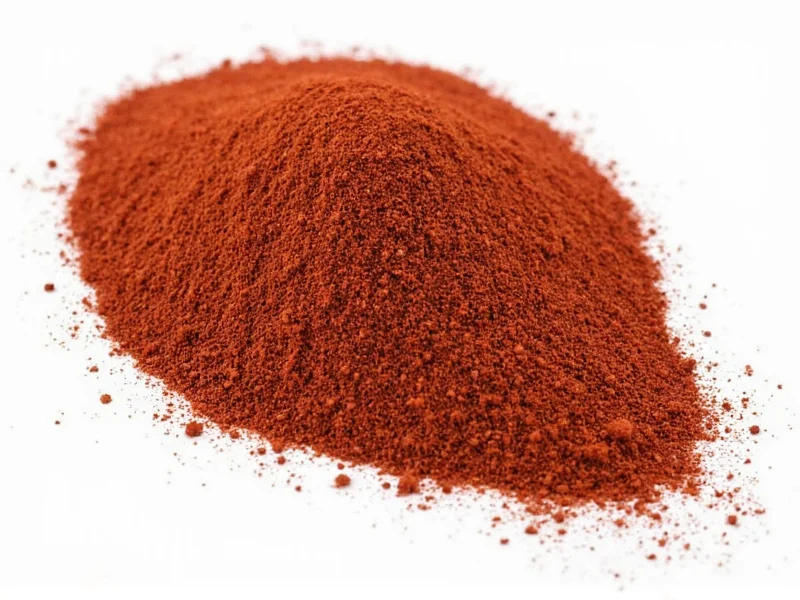If you're searching for sumac spice substitutes, you're likely preparing a Middle Eastern or Mediterranean recipe that calls for this distinctive ingredient. Sumac's unique tart, citrusy flavor enhances dishes like fattoush salad, grilled meats, and rice pilafs. When you don't have sumac on hand, understanding proper substitutions prevents recipe disappointment while maintaining authentic flavor profiles.
Understanding Sumac's Flavor Profile
Before exploring sumac spice replacement options, it's essential to understand what makes sumac special. This deep red spice comes from grinding dried sumac berries, primarily from the Rhus coriaria plant. Unlike lemon or vinegar, sumac offers a complex tartness without liquid moisture, making it ideal for dry rubs and finishing dishes. Its pH level sits between 2.5-3.0, creating that signature tang while adding subtle earthy notes.
Professional chefs note that sumac's unique quality lies in its ability to provide acidity without altering texture—something liquid alternatives struggle to replicate. This characteristic makes finding the perfect sumac spice substitute challenging but not impossible.
Top 5 Sumac Spice Substitutes Ranked
Not all sumac alternatives work equally well in every recipe. Here's how common substitutes compare based on flavor accuracy, color matching, and recipe compatibility:
| Substitute | Flavor Match | Color Match | Best For | Ratio (vs 1 tsp sumac) |
|---|---|---|---|---|
| Lemon juice + paprika | 9/10 | 8/10 | Salads, marinades | ½ tsp lemon juice + ¼ tsp paprika |
| Za'atar blend | 8/10 | 7/10 | Dry rubs, flatbreads | 1½ tsp za'atar |
| Vinegar + herbs | 7/10 | 5/10 | Cooking liquids, stews | ¼ tsp vinegar + ¼ tsp dried thyme |
| Tamarind paste | 6/10 | 4/10 | Complex sauces | ¼ tsp tamarind + ¼ tsp water |
| Amchur (mango powder) | 5/10 | 3/10 | Indian-inspired dishes | ½ tsp amchur |
Detailed Sumac Substitute Analysis
Lemon Juice and Paprika Combination
This sumac spice replacement works best when you need both the tartness and distinctive red color. The lemon juice provides the essential acidity while paprika contributes color without overwhelming heat. For optimal results in salad dressings, combine ½ teaspoon lemon juice and ¼ teaspoon sweet paprika per teaspoon of sumac required. In dry applications like meat rubs, reduce liquid content elsewhere in your recipe to compensate.
Za'atar Spice Blend
Za'atar makes an excellent sumac substitute because it actually contains sumac as one of its primary ingredients (typically 30-40% of the blend). This Middle Eastern spice mixture of thyme, oregano, sesame seeds, and sumac provides similar earthy-tart notes. Use 1½ teaspoons za'atar for every teaspoon of sumac. While this alternative adds additional herbal flavors, it works particularly well in recipes where sumac plays a supporting rather than starring role.
Vinegar-Based Alternatives
When seeking a sumac spice substitute for cooking applications rather than finishing dishes, vinegar options prove valuable. Apple cider vinegar offers the closest flavor profile to sumac's natural tartness. For every teaspoon of sumac, use ¼ teaspoon apple cider vinegar mixed with ¼ teaspoon dried thyme. This combination works especially well in cooked dishes where the vinegar's sharpness mellow during preparation.
When to Choose Specific Sumac Replacements
The ideal sumac spice substitute depends on your specific recipe requirements:
- Dry applications (rubbed on meats or vegetables): Opt for za'atar or a dry mix of paprika and dried herbs. Avoid liquid substitutes that could prevent proper searing.
- Salad dressings and dips: Lemon juice combinations work best, providing the necessary acidity without altering texture.
- Cooked dishes (stews, braises): Vinegar-based substitutes integrate well during cooking, with flavors melding as the dish prepares.
- Finishing dishes (like fattoush salad): Prioritize color and immediate tartness—lemon-paprika mixtures excel here.
Professional Chef Tips for Sumac Substitution
Experienced chefs recommend these techniques when replacing sumac in recipes:
- Adjust gradually: Start with 75% of the recommended substitute amount, then taste and adjust. Over-acidification is difficult to correct.
- Consider recipe moisture: When using liquid substitutes, reduce other liquids by ¼ teaspoon per teaspoon of sumac replaced.
- Balance with sweetness: If your substitute makes the dish too tart, add ¼ teaspoon honey or sugar to balance flavors.
- Timing matters: Add vinegar substitutes early in cooking to mellow sharpness, but add lemon-based substitutes near the end to preserve brightness.
Common Sumac Substitute Mistakes to Avoid
Many home cooks make these errors when seeking sumac spice replacements:
- Using straight lemon zest (too bitter) instead of juice
- Substituting with red pepper flakes (adds heat without tartness)
- Using too much vinegar (overwhelms other flavors)
- Ignoring color impact in visually important dishes
- Not adjusting other recipe components to accommodate substitutes
Creating Your Own Sumac Alternative Blend
For frequent cooking with Middle Eastern recipes, consider making a homemade sumac substitute blend:
Combine 2 tablespoons sweet paprika, 1 tablespoon dried thyme, 2 teaspoons lemon zest powder, and 1 teaspoon citric acid (optional). Store in an airtight container for up to 6 months. This sumac spice replacement works at a 1:1 ratio in most recipes and provides consistent results.











 浙公网安备
33010002000092号
浙公网安备
33010002000092号 浙B2-20120091-4
浙B2-20120091-4